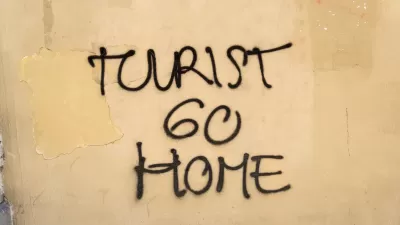Officials in Cambodia are hoping to capitalize on tourists' interest in the killing fields of the Khmer Rouge regime with a proposed theme park.
But his is not the typical theme park. The idea is to recreate and restore a number of historic buildings in the village of Anlong Veng, the last place of resistance in the late 1970s as the Khmer Rouge fell.
"The Cambodian government plans to develop this sun-baked, mine-riddled frontier town into a theme park devoted to the Khmer Rouge, the brutal regime that murdered perhaps 15 percent of Cambodia's population when it ruled from 1975 to 1979. The planned park is of a piece with Cambodia's larger effort to capitalize on the atrocities of its past-and to tap into a booming global industry in travel to macabre destinations, known as thanatourism.
Cambodia depends on tourism for about a fifth of its GDP. Its premier attraction is Angkor Wat, the magnificent complex of ancient Buddhist and Hindu buildings, which draws 2 million visitors annually, by some estimates. But hundreds of thousands of tourists also visit two sites in Phnom Penh with a more grotesque appeal: S21, a Khmer torture center that later became a museum; and the killing fields at Choeung Ek, where some 9,000 bodies were buried en masse and where more than 5,000 human skulls are displayed in a glass-and-concrete stupa."
FULL STORY: Dark Tourism

Alabama: Trump Terminates Settlements for Black Communities Harmed By Raw Sewage
Trump deemed the landmark civil rights agreement “illegal DEI and environmental justice policy.”

Planetizen Federal Action Tracker
A weekly monitor of how Trump’s orders and actions are impacting planners and planning in America.

The 120 Year Old Tiny Home Villages That Sheltered San Francisco’s Earthquake Refugees
More than a century ago, San Francisco mobilized to house thousands of residents displaced by the 1906 earthquake. Could their strategy offer a model for the present?

In Both Crashes and Crime, Public Transportation is Far Safer than Driving
Contrary to popular assumptions, public transportation has far lower crash and crime rates than automobile travel. For safer communities, improve and encourage transit travel.

Report: Zoning Reforms Should Complement Nashville’s Ambitious Transit Plan
Without reform, restrictive zoning codes will limit the impact of the city’s planned transit expansion and could exclude some of the residents who depend on transit the most.

Judge Orders Release of Frozen IRA, IIJA Funding
The decision is a victory for environmental groups who charged that freezing funds for critical infrastructure and disaster response programs caused “real and irreparable harm” to communities.
Urban Design for Planners 1: Software Tools
This six-course series explores essential urban design concepts using open source software and equips planners with the tools they need to participate fully in the urban design process.
Planning for Universal Design
Learn the tools for implementing Universal Design in planning regulations.
Clanton & Associates, Inc.
Jessamine County Fiscal Court
Institute for Housing and Urban Development Studies (IHS)
City of Grandview
Harvard GSD Executive Education
Toledo-Lucas County Plan Commissions
Salt Lake City
NYU Wagner Graduate School of Public Service



























